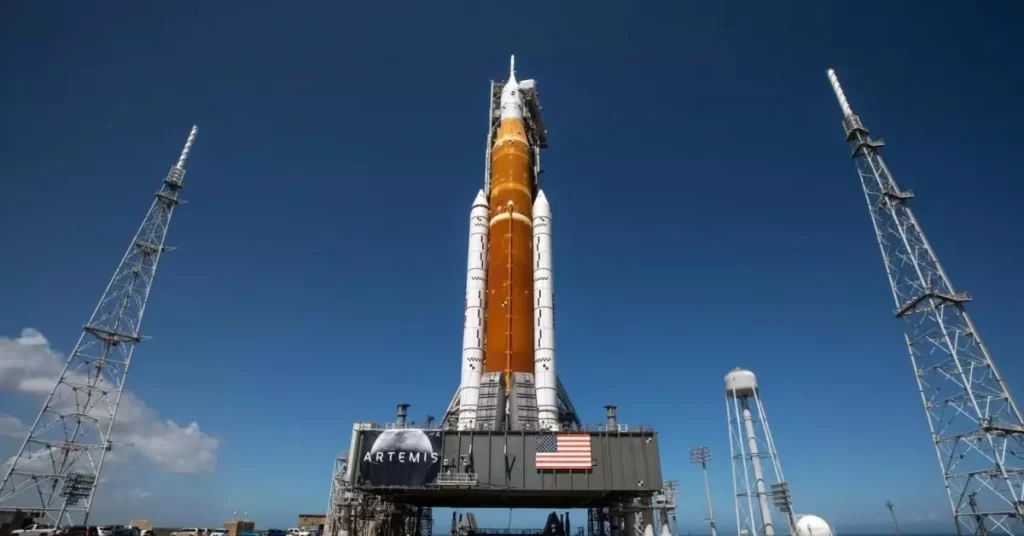NASA’s Space Launch System Faces Affordability Challenges And Requires Cost-Cutting Measures
In the heart of NASA’s ambitious Artemis program lies the Space Launch System (SLS), a cutting-edge rocket intended to usher humanity back to the moon and pave the way for interplanetary travel, including the monumental goal of reaching Mars. However, recent revelations have cast a shadow over this space odyssey, as the program grapples with significant budgetary hurdles and questions about its long-term financial viability.
The GAO Report: Uncovering Transparency Issues
A recent report by the U.S. Government Accountability Office (GAO) has brought NASA’s SLS program under intense scrutiny. The report highlights glaring concerns, primarily revolving around transparency and fiscal oversight. NASA’s historical lack of consistent transparency and tracking of production cost overruns has raised alarming questions about the agency’s ability to manage the program within the confines of its budget. The absence of detailed monitoring mechanisms, especially concerning recurrent production items, has led to financial ambiguities and jeopardized the program’s economic sustainability.
Root Causes: Outdated Contracting Structure and Lack of Baseline
At the heart of the issue lies NASA’s contracting structure, perceived as outdated and burdened with excessive cost risks. The GAO report emphasizes the necessity of establishing a clear cost baseline, a fundamental framework that has been lacking in the SLS program. NASA’s approach, requiring cost and schedule commitments only up to the first demonstration flight, has been deemed insufficient. The absence of detailed tracking of production costs for essential components, such as the rocket’s core stage booster and main engines, has created a precarious situation where spending remains uncontrolled and unmonitored.
NASA’s Four-Pronged Strategy: A Beacon of Hope
Amidst these challenges, NASA has outlined a comprehensive four-step plan to steer the SLS program back on course:
Stabilizing the Flight Schedule: NASA aims to establish a stable flight schedule, alleviating uncertainties arising from frequent changes in the Artemis program’s timeline. A consistent schedule not only ensures smoother operations but also promises substantial cost savings in the long run.
Achieving Learning Curve Efficiencies: Efforts are underway to encourage contractors to enhance efficiency in recurring hardware production. By identifying and addressing constraints related to initial builds, NASA aims to streamline the manufacturing process, reducing both time and costs associated with production.
Encouraging Innovation: Collaborative initiatives between NASA and contractors focus on embracing innovative manufacturing techniques. By leveraging cutting-edge practices, the program anticipates significant reductions in production time and costs, making space exploration more economically viable.
Adjusting Acquisition Strategies: NASA’s future vision involves transitioning to fixed-price contracts. Once stability in the SLS flight schedule is achieved, this model would place the cost risk beyond the predetermined amount squarely on the shoulders of the contractors, fostering financial clarity and responsibility.
The Unconventional Alternative: NASA as a Customer, Not an Owner
In a paradigm-shifting move, the GAO report suggests a radical alternative model. Instead of owning the SLS hardware, NASA could become a customer, procuring launch services from a contractor responsible for the rocket’s ownership, operation, and integration. This innovative approach, akin to NASA’s existing collaboration with private entities like SpaceX, offers a tantalizing prospect of significantly reducing taxpayer costs.
The Significance of Artemis: A Bold Vision for Humanity
Beyond the budgetary challenges and strategic solutions lies the profound significance of the Artemis program. Artemis stands as a testament to human ingenuity and the relentless pursuit of exploration. It represents a bridge between the historical lunar landings of the Apollo era and the tantalizing dream of human habitation on Mars. Achieving the goals set forth by Artemis not only revitalizes our fascination with space but also inspires future generations, fostering a culture of scientific inquiry and discovery.
Navigating the Cosmos, One Challenge at a Time
As NASA’s SLS program navigates these intricate financial challenges, it does so with the spirit of determination that has defined humanity’s exploration of the cosmos. Every obstacle encountered is an opportunity for innovation and growth. The lessons learned in the pursuit of affordability and sustainability today will echo through the annals of space exploration, shaping the way we reach for the stars tomorrow.
In the grand tapestry of human history, the story of Artemis and the SLS program represents a pivotal chapter—a chapter marked not just by the challenges faced but by the resilience displayed, reminding us that the quest for the unknown is a journey worth taking, regardless of the obstacles encountered along the way.



